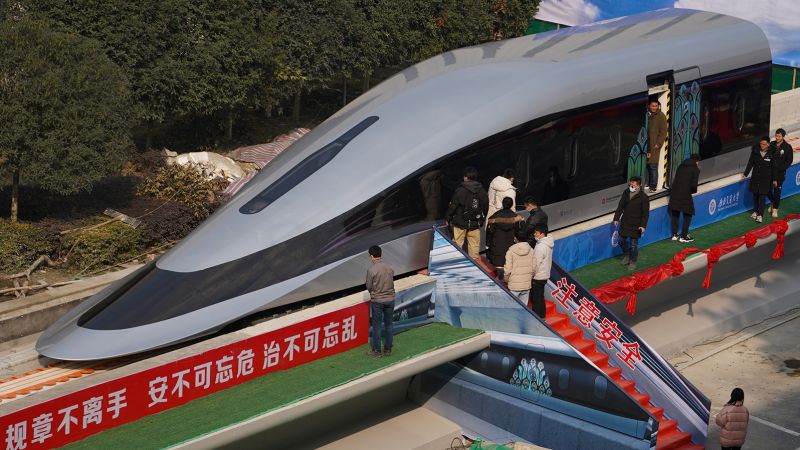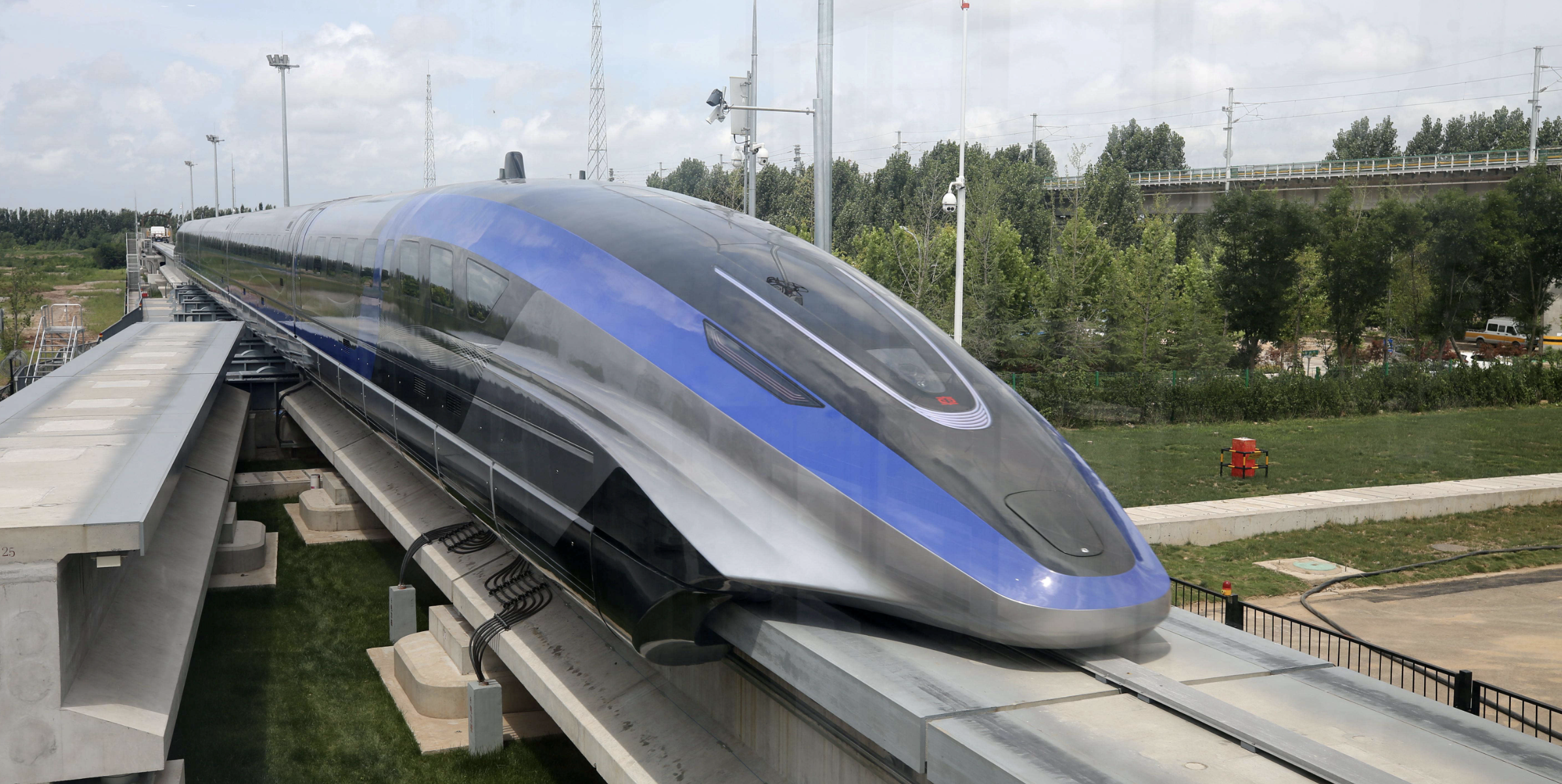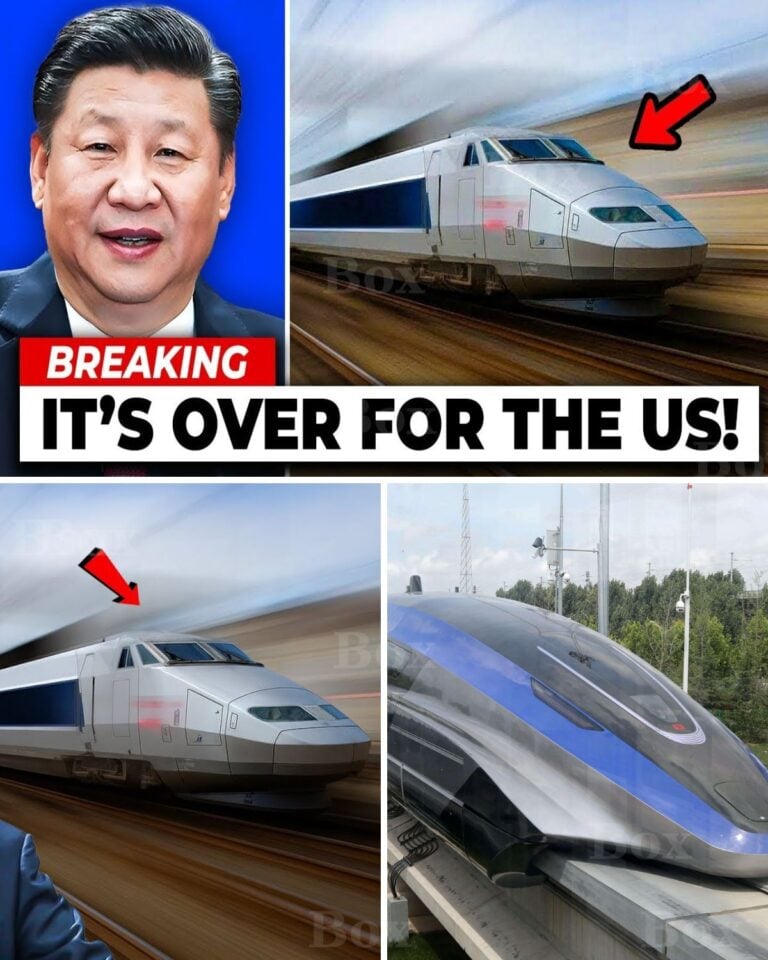China’s Next-Generation Maglev Train Signals the Future of High-Speed Transportation
A New Wave of Innovation in Rail Technology
China’s transportation sector has seen rapid progress over the past two decades, and its high-speed rail system is now the largest in the world. Among its most ambitious projects is the development of a next-generation magnetic levitation (maglev) train, aiming to push the boundaries of speed, efficiency, and low-carbon mobility.
In recent years, China has unveiled a series of prototype maglev trains designed to explore speeds far beyond current commercial systems. While online discussions sometimes exaggerate these capabilities, the real engineering achievements are significant and reflect China’s long-term strategy to lead in advanced transportation technology.
What Maglev Technology Actually Does

Unlike traditional trains, maglev systems use powerful magnets to lift the train slightly above the guideway, eliminating physical contact with rails. With no friction between wheels and track, trains can accelerate rapidly and maintain smooth, stable motion at high speeds.
China’s research institutions, including major universities and state-owned rail manufacturers, have focused on high-temperature superconducting (HTS) maglev technology. This approach allows for stronger magnetic fields while reducing energy consumption, making it ideal for future very-high-speed prototypes.
The Reality Behind the Reported Speeds
While some media sources claim a Chinese maglev train has surpassed 620 mph, no such speed has been verified in any official engineering report, academic paper, or government announcement.
However, China has successfully tested 600 km/h (373 mph) maglev prototypes, which remains one of the fastest ground-transportation speeds ever achieved under controlled conditions. These tests demonstrate the potential of future systems, though commercial deployment at such speeds presents major technical and cost challenges.
Experts caution that reaching speeds above 600 km/h would require breakthroughs in:
-
Aerodynamic drag reduction
-
Guideway precision
-
Tunnel and cross-wind engineering
-
Long-distance power supply
-
Safety protocols at extreme speeds
Thus, while 620 mph is not a current reality, China’s long-term research aims to explore what may one day be possible in controlled experimental settings.
Inside the Maglev Prototype

Reports from Chinese engineering teams describe the interior of high-speed prototypes as spacious, quiet, and engineered with advanced vibration-control systems. While not “five-star luxury,” modern maglev cabins aim to achieve:
-
Wide seating layouts
-
Reduced cabin noise
-
Smooth acceleration
-
Modern digital interfaces
-
Energy-efficient lighting and climate control
These features are consistent with China’s existing high-speed rail service, which already emphasizes passenger comfort and reliability.
How China Plans to Use Maglev Technology

China’s roadmaps identify several priority corridors where future maglev systems may be deployed, including:
-
Intercity routes between major metropolitan clusters
-
Airport express links
-
Long-distance economic zones requiring rapid mobility
However, no 600-km/h commercial maglev line currently exists. The planned Shanghai–Hangzhou 600-km/h line remains in early assessment phases, and large-scale deployment will require significant investment and political coordination.
International Competition: Japan, Europe, and the U.S.
China is not the only country pursuing maglev advancement.
Japan
Japan’s Chūō Shinkansen, using superconducting maglev technology, has already achieved 603 km/h in testing and remains the world’s most developed near-commercial ultra-high-speed maglev project. However, construction delays and high costs have slowed progress.
Europe
Germany, once a pioneer in maglev development (Transrapid), now focuses on selling maglev technology internationally rather than building systems at home.
United States
Interest in high-speed rail is growing, but U.S. maglev proposals remain in early policy or feasibility stages. A few projects—such as Washington–New York maglev evaluations—have been discussed but not implemented.
China’s rapid prototyping has intensified global competition, encouraging other nations to accelerate research and revisit high-speed infrastructure planning.
Environmental Advantages of Advanced Maglev Systems

Maglev technology, if powered by low-carbon electricity sources, offers environmental benefits:
-
Zero direct emissions at point of use
-
Less noise pollution than conventional high-speed trains
-
Reduced dependence on short-haul air travel
-
Lower long-term maintenance costs due to frictionless movement
These factors make maglev a strong candidate for future sustainable mobility systems.
What Barriers Still Remain?
Despite impressive testing achievements, several obstacles stand between prototype testing and full commercial adoption:
1. Cost
Maglev lines require specialized guideways, advanced power systems, and precise engineering—significantly more expensive than traditional high-speed rail.
2. Infrastructure alignment
High-speed maglevs need long, straight tracks with minimal curves, which is difficult in dense or mountainous regions.
3. Market demand
To justify ultra-high-speed systems, passenger volumes must be large enough to offset construction and operational expenses.
4. Safety and reliability validation
Operating at extreme speeds demands rigorous testing across weather conditions, terrain types, and emergency scenarios.
What the Future Likely Holds
Most transportation analysts expect the following timeline:
-
Short-term (0–5 years): Continued prototype testing at 600 km/h; gradual expansion of medium-speed maglev (200–500 km/h) in select cities
-
Medium-term (5–15 years): Potential first commercial ultra-high-speed maglev corridor if economic feasibility improves
-
Long-term (15+ years): Exploration of speeds beyond 600 km/h if engineering breakthroughs occur
Thus, while the future is promising, reality is more measured than viral headlines suggest.
Public Reaction: Fascination and Optimism
Global interest in China’s maglev efforts remains strong. Many travelers are excited by the possibility of crossing long distances faster than conventional planes. Enthusiasts view maglev as a step toward cleaner, quieter, and more efficient mobility.
At the same time, experts urge realistic expectations: transformative transportation networks take decades to refine.
Conclusion: Innovation Is Real, but Claims Must Be Grounded
China’s next-generation maglev research represents a major scientific milestone. Although no 620-mph commercial train exists today, China has achieved world-leading speed records in controlled testing and continues to push the boundaries of mobility technology.
The race toward the future of transportation is underway—but it will be driven by engineering progress, economic planning, and scientific transparency, not sensational claims.
Sources
-
Xinhua – Coverage of China’s 600 km/h maglev prototype
-
China Railway Rolling Stock Corporation (CRRC) – Technical releases
-
Japan Railway Group – Chūō Shinkansen progress reports
-
International Union of Railways – High-speed rail studies
-
Nature & IEEE Transportation Technology Reviews
